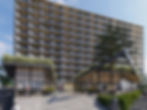Building Rendering: 7 Reasons You Need An Architectural Rendering
- Travis Masters
- Jan 28, 2022
- 7 min read
Updated: Feb 2, 2022
For years, drawing sketches by hand on blueprints or plastic sheets has been the strategy for architects. Today, a building rendering using special 3D architectural rendering techniques is gradually becoming the norm.

Building rendering services make it easier than ever to create immersive and attractive 3D images of a construction project with photorealistic drawings and presentations - but what are the main reasons why you’ll need them? This article discusses seven (7) major reasons why architectural rendering can be more than worth it.
1. A building rendering is cost-effective
We can all agree that building a physical 3D model of a building or sketch drawings on plastic sheets and blueprints is not the most cost-effective way to communicate building design ideas.
Not only does this cost more money, but it’s also far more time-consuming.
This doesn’t even account for the possibility of changes after the initial design which might be necessary when the client is not satisfied with the design or some errors need to be corrected.
However, a building rendering or an architectural rendering is far more cost-effective.
The design process is software-based. Where hand-drawn renderings would generally take weeks or months to create, modern building renderings require less effort and time to complete. Using special architectural techniques, architects can build renders using preset textures and finishes, snap dimensions, and more to create realistic-looking renders that guarantee a better viewing experience.
Edits and changes can be done quicker and more efficiently. Overall, the process is faster and easier, without reams of paper and plastic sheets.
2. Architectural renderings are more immersive and visually attractive
It can be difficult to take clients through a prospective design when the design does not yet exist or where they can’t physically walk through the space. This is because the human eye and other senses are wired to work better with shapes, lines, colors, and dimensions, among other

However, with a building rendering better feel of how a particular design project will look because of the more visually attractive and immersive render. The depth, color, pictures depth, color, style, and clarity make them far more beautiful than stick drawings.
3. Opportunity to identify and troubleshoot design issues before construction
Architectural errors can be pretty costly up toward the 10’s of thousands, if not more.
This is especially so in cases where the errors do not get noticed before construction. But, aside from being an excellent visualization tool, architectural rendering techniques might also benefit civil design, landscape, structural, and other construction processes.
With an architecturally accurate building rendering, the render can serve as a guidepost and help pinpoint errors before construction begins.
Unlike blueprint designs where minor errors might easily escape being noticed, architectural renderings help architects get an expanded view of the project design idea. In this case, mistakes can be quickly seen and addressed before they lead to costly redesigns during construction or even cause dangerous accidents.
Everyone in the trade hates change orders due to costly mistakes or unhappy clients with the design. Wouldn’t it be better to reduce the number of potential change orders in a project by using a building rendering?
4. Easy editing and sharing of building renderings
What happens when a client is not satisfied with an architectural drawing, building mockup, and several other conventional methods used to convey design ideas?
With sketches on blue paper, one would need a giant eraser to clean out the parts that need to be changed. You’ll need a bottle of acid on plastic sheets to clear out the pen marks. Not only is this frustrating, but there are also too many variables for errors that could affect the entire design.
Even in today's advanced CAD programs like AutoCAD and ArchiCAD, simple line drawings in this software would be very time-consuming if a change in design was needed. Especially if the project was further down, the design process was almost nearing completion.
Editing or even sharing building renderings is much more straightforward.
Because architectural renderings are computerized and are 3D modeled, they only need a few mouse clicks and a keyboard to make updates that can be shared in real-time. It’s even possible to save duplicates of the design to share with clients when preferences are uncertain.
Sharing a building rendering is also incredibly easy. Unlike architectural drawings that require everyone involved to be together in a particular room to view the design, computerized architectural renderings are easy to share between teams, clients, and other stakeholders.
5. A building rendering gives a better marketing and promotional experience
The realistic-looking imagery from the renders makes it easier for people to connect with and visualize the different spaces. A building rendering can therefore go a long way to enhance the experience of real estate marketing and promotions. This process depends mainly on how the marketing pieces are effectively able to arouse the interest and emotions of the audience.

With an architectural rendering, it’s almost always easier to show clients what the final space/design would look like. The clarity, color, style, and depth make it easier for the clients to connect or engage with the design vision. So, if you’re a real estate agent, developer, or interior designer looking for a way to draw in prospects, having building renderings of your offers will always make a massive difference to both your marketing efforts and sales results.
6. Visualizing design spaces with your senses
Because of the realism of a building rendering, it’s much easier for clients to connect with the space to get a near-vivid perspective of what that particular space would look like.
Rather than looking at a blueprint, the depth, color, style, clarity of the picture, and architectural rendering techniques and elements make the renders more visually attractive to clients. This makes it easier to visualize themselves within such spaces rather than hand-drawn sketches that only indicate the dimensions of rooms.
Hand-drawn renderings have their place in the rendering world and are very effective. Although, when you compare it to a photo-realistic building rendering, our eyes, senses, and experience in our brain get heightened. We start to remember past experiences similar to what the building rendering is showing.
This also starts to trigger the senses. What you smelled in that experience, or what you felt. Was this experience warm or cold, or were you in a happy or sad mood? This simple building rendering has turned into something more emotional and personal to the viewer. It isn’t just a rendering; it is a photo-realistic building rendering.
7. Compliance with legal requirements and codes
In most cases, buildings must comply with specific building codes based on the different legal parameters, which might be found on the location.
With architectural 3D rendering, it’s easy to get a team of engineers to review the render for both quality control and possible legal concerns. Not only does this help identify inherent errors in the design, but it can also help identify issues of a legal matter, which in turn can be quickly addressed before project completion. While this might not be such a big deal with simple building rendering designs, large-scale projects like hospitals, schools, hotels, condominiums, and apartment blocks might benefit from this ability of a building rendering to help identify and address legal oversights.
Applications of building rendering
Building rendering has diverse applications across different industries and sectors.
Anyone with a vision for a new project design or redesign can always leverage architectural rendering techniques to visualize the project accurately and true to life. That said, the benefits and applications of building rendering spans different industries that include;
Real estate
Want to be able to show the building from every angle or layout?

Perhaps you want to create completely immersive viewing experiences even for real estate projects that do not exist? No problem! A building rendering can help realtors, developers, real estate marketers, and more convey design details with greater clarity and detail more than anything possible with sketches and blueprints.
Architecture
There’s a reason why architectural renderings gradually replace hand-drawn sketches, blueprints, etc. These renders reduce the chances of errors during construction.
Unlike in the past, when errors would often be missed only to be discovered during construction, architectural renderings make it easier to detect missed details and miscalculations before they cause delays and costly redesigns during construction. These errors are also easily corrected in real-time, with no need for complex redesigns and time-consuming re-drawing.
Interior Design
A picture is worth a thousand words and even more.

In interior design, a 3D building rendering can make the work of an interior designer much more accessible than ever. Interior designers can leverage a 3D building rendering to understand their clients' design visions better. Clients, in turn, can easily make or request adjustments in real-time. This is a win-win for both parties!
Choosing the best architectural rendering services
Are you considering getting building rendering services anytime soon?
Before you commission the next available “professional” you can find to render the design for your planned project, you’ll want to ensure at least they tick the boxes at all of the right places. To provide high-quality building renders, here are three things we recommend looking out for when hiring any professional for architectural rendering services;
Expertise and experience
How robust is their experience as well as their expertise? Do they have a solid background in architecture? Are they familiar with projects similar to what you have in mind?
How long have they been in the business of architectural rendering?
Do they understand the basis of architecture, or are they just another jobber looking for a quick buck? All of these would impact the quality of your building renders!
Office location and background
Communication is essential when it comes to design and construction projects.
If you are commissioning an overseas-based rendering company for your architectural rendering, you want to ensure the flow of communication is top-notch. Language barriers and translations can mean that subtle and essential details might get lost or muddled up during transmission. You’ll want to avoid this.
Pricing and estimation
While every business and private client wants cost-effective building rendering services at the best price point, it’s always important to know how much the service will cost before committing to it. Things become more manageable when working with a rendering company that offers free and fast quotes. This helps ensure transparency so you can know how much the service costs before committing to it.
Conclusion
A building rendering offers enormous benefits to everyone from aspiring homeowners to real estate developers, realtors, interior designers, and everyone involved in the real estate design and construction processes.
But despite the enormous benefits, the quality of your final delivery (the actual renders) is only as excellent as the quality of the professionals behind it. This is why hiring a credible and proven rendering company is always the intelligent thing to do.
Here at Masitects, our team of professionals (all from the United States!) with extensive architectural rendering experience can help you breathe life into your design visions. You can count on us for anything and everything related to a building rendering! Contact us today and mention this blog for 15% off every rendering on your next project!



















